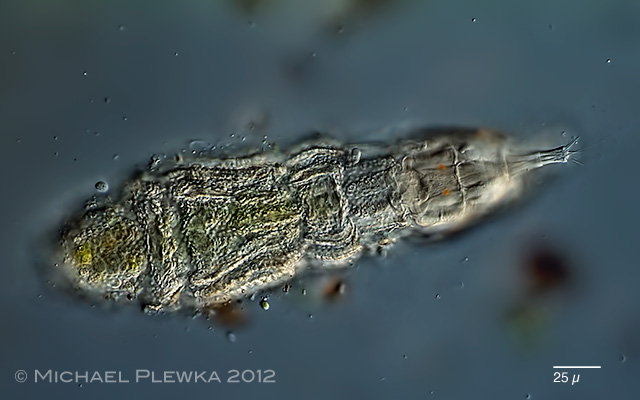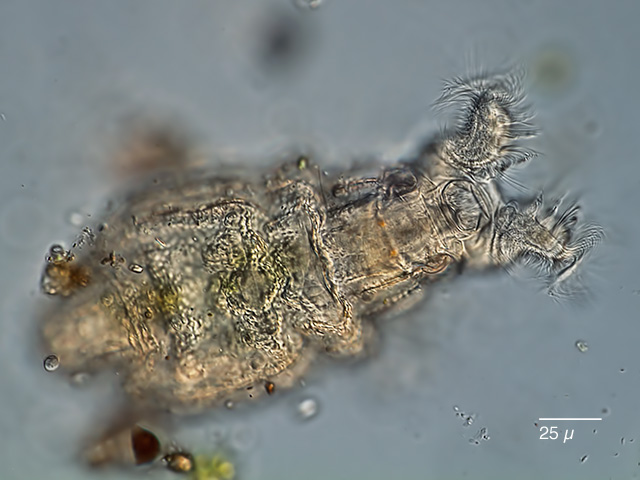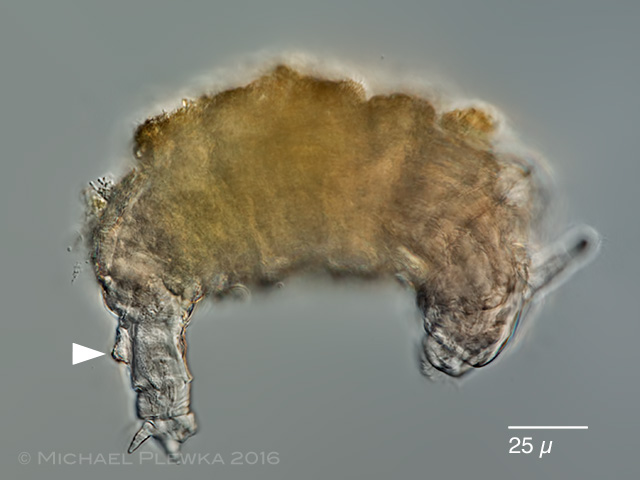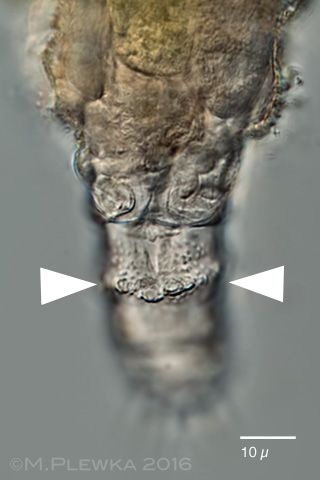| Philodina rugosa, whirling (1) |
| |
 |
| Philodina rugosa, creeping, focus on the dorsal antenna and integument. The integument of the trunk is coverd with granules whereas the integument of the neck and the foot is smooth. (1) |
| |
 |
| Philodina rugosa, whirling; specimen from (2). Visible are the two orange eyespots on the brain. |
| |
|
|
| Philodina rugosa, left image: trophi with 3/3. right image: foot with 4 toes (white triangles) and the two spores (Sp). (2) |
| |
 |
| Philodina rugosa, lateral view of specimen from (3); The arrow points to the bump on the foot. |
| |
 |
| Philodina rugosa, dorsal view of the foot showing the bump. (3) |
| |
 |
| Philodina rugosa, creeping specimen. (3) |
| |
|
|
| Philodina rugosa, left: crop of the above image showing foot with spurs.; right: rostrum of creeping specimen, focus plane on the dorsal lamella. The grains might be the exits of the subcerebral glands (3) |
|
| Differential diagnosis: Philodina rugosa coriacea: the integument is more reddish and has no ridges on the dorsal side. The interspace between the spurs is larger, spurs are shorter than in P. rugosa sensu strictu. P. rugosa maybe confused with Habrotrocha aspera or Habrotrocha crenata. Both have 3 toes. Habrotrocha aspera has dental formula (DF) 2/2 and has a point between the trochal discs. Habrotrocha crenata has dental formula (DF) 8/8 and lacks the dent between the trochal discs. |
| |
| Location: avenue in Marina si Torre del lago, Tuscany, Italy (1); Hattingen Oberstüter No 55, staircase (2) |
| Habitat: moss on tree, with Didymodactylos carnosus and Mniobia magna (1); moss on concrete (2) |
| Date: 18.11.2012 (1); 21.02. 2016 (2) |
|
|